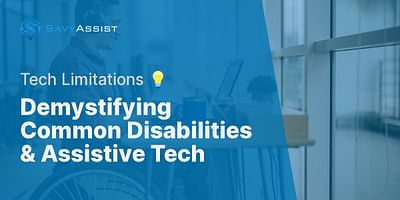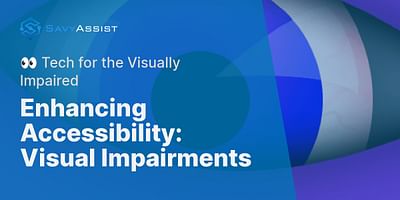Arthur is a seasoned UX designer and an authority in the field of accessibility consultancy. With a proven track record of collaborating with a multitude of companies, he has significantly enhanced the accessibility of their products. Arthur is driven by a fervor for crafting user experiences that are all-embracing and inclusive.
Hey there! I'm Ethan, and I'm here to help you discover the best assistive technology that can improve healthcare access for individuals with disabilities. Accessible healthcare is crucial for everyone, and technology plays a vital role in bridging the gap for individuals with disabilities. Let's dive into some of the top assistive technologies that can make a difference:
1. Screen Readers: For individuals with visual impairments, screen readers are a game-changer. These software applications use synthetic speech to read aloud the content displayed on a computer or mobile device screen. Popular screen readers like JAWS (Job Access With Speech) and NVDA (NonVisual Desktop Access) enable users to navigate websites, read documents, and even interact with healthcare portals independently.
2. One-Handed Keyboards: Designed for individuals with upper limb disabilities, one-handed keyboards allow users to type efficiently using only one hand. These keyboards come in various layouts and designs, accommodating different needs. Some popular options include the Maltron Single-Handed Keyboard and the Matias One-Handed Keyboard. With these keyboards, individuals can access healthcare information, communicate with healthcare providers, and manage their health effectively.
3. Speech-to-Text Software: For individuals with mobility impairments or those who struggle with typing, speech-to-text software is a fantastic solution. This technology converts spoken words into written text, allowing users to dictate their thoughts, write emails, or fill out forms without using a keyboard. Notable speech-to-text software includes Dragon NaturallySpeaking and Google Docs Voice Typing. It's particularly beneficial for individuals with conditions like dyslexia, arthritis, or spinal cord injuries.
4. Accessible Web Design: Ensuring that healthcare websites and portals are accessible to individuals with disabilities is crucial. Accessible web design focuses on making websites perceivable, operable, understandable, and robust for all users. By implementing features like alternative text for images, keyboard navigation, and clear headings, healthcare providers can ensure that their online resources are accessible to individuals with disabilities.
5. Mobile Apps for Disabilities: Mobile apps can greatly enhance healthcare access for individuals with disabilities. From medication reminders to symptom trackers, there are numerous apps designed specifically for managing health conditions. Some popular examples include Pill Reminder by Medisafe and MyTherapy. These apps empower individuals to take control of their health, track their progress, and communicate effectively with healthcare providers.
By leveraging assistive technology like screen readers, one-handed keyboards, speech-to-text software, accessible web design, and mobile apps, individuals with disabilities can overcome barriers and access healthcare more easily. These technologies not only enhance independence but also promote inclusivity in the healthcare system.
Remember, everyone deserves equal access to healthcare, and with the right assistive technology, we can make that a reality. If you have any specific needs or questions about assistive technology, feel free to reach out. I'm here to help!















